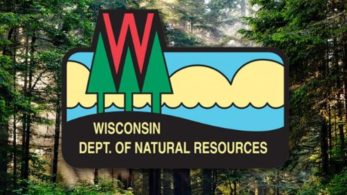Public meeting set to initiate Western Prairie regional master plan
Contact(s): Shelley Warwick, DNR property planning, 608-266-2698, or Paul Holtan, DNR Office of Communications, 608-267-7517
Public comment period open through Nov. 13
BALDWIN, Wis. — The public will have an opportunity at a public meeting and through a comment period to provide input on the beginning stages of developing a master plan for Department of Natural Resources lands in St. Croix, and portions of Polk and Pierce counties.
This is the first public input period starting the master planning process for the Western Prairie region. The meeting will be open house-style with DNR staff available to answer questions.

Willow River State Park is one of the properties that will be included in the Western Prairie Ecological Landscape master planning process.Photo credit: DNR
The Western Prairie Ecological Landscape includes extensive grasslands, remnant prairies, savannas, the lower St. Croix and the Kinnickinnic River corridors, and various cold-water and cool-water streams. Some of the properties included in this regional plan are Kinnickinnic and Willow River state parks, Kinnickinnic River Fishery Area, Cylon Wildlife Area and the Western Prairie Habitat Restoration Area.
“The goal of this meeting is to let the public know of our intent to develop a regional plan for properties in the Western Prairie Ecological Landscape. We’ll also be collecting public feedback on the existing and future use and management of state-owned properties in the region,” said Shelley Warwick, a property planner in the DNR Bureau of Facilities and Lands.
The public meeting will be held Monday, November 5, 2018 from 5 to 7 p.m. at the St. Croix County Agriculture Services & Education Center, 1960 8th Ave, Baldwin. Property maps and other documents will be available for review.
Online public survey for comments on public use and management of state owned properties can be found at: www.surveymonkey.com/r/QNTVKLC. The public input period is October 23 through November 13, 2018.
Under the master planning process, guided by Chapter NR 44, Wisconsin Administrative Code, department staff develop a plan which describes the authorized land management, resource protection, facility development and management of recreational use for department properties. The department is conducting planning at a regional scale based on 16 previously defined Ecological Landscapes of Wisconsin, areas with similar ecological attributes and management opportunities.
People can learn more about and engage in the Western Prairie regional planning process by searching the DNR website, dnr.wi.gov, for keywords “property planning” and selecting Western Prairie Ecological Landscape on the map or drop down menu.
For additional information people may contact Shelley Warwick, property planner, DNR Bureau of Facilities and Lands at 608-266-2698 or shelley.warwick@wisconsin.gov, or US mail at Shelley Warwick, Wisconsin DNR, P.O. Box 7921, Madison, WI, 53707-7921.
________________________
Steer clear of invasive holiday plants and seek native alternatives
Contact(s): Matthew Wallrath, WDNR organisms in trade outreach coordinator, 608-266-8916; matthew.wallrath@wisconsin.gov
A ‘bittersweet’ message about colorful autumn arrangements
MADISON – Homeowners and decorators creating their autumn displays should avoid two invasive plants that have been used historically in Thanksgiving and other floral arrangements but are increasingly recognized as harmful to forests, wetlands, prairies, and other wild areas.
Oriental bittersweet and multiflora rose offer attractive red accents but their use in holiday decorations and their disposal in compost piles increases the risk that these invasive plants will spread to new sites, says Matt Wallrath, Wisconsin Department of Natural Resources outreach coordinator working with the plant nursery, aquarium, pet, and bait industries to prevent the sale and distribution of invasive species.
“Our wild lands and conservation areas are threatened by these non-native plant species, which can outcompete native plants and displace native wildlife,” Wallrath says. “Vendors and consumers should seek native plant alternatives instead and avoid these invasive plants, which are illegal to sell or distribute in Wisconsin.”

Oriental bittersweet (above) and multiflora rose are invasive plants and should not be used in fall floral displays.Photo credit: Katja Schulz
Oriental bittersweet (Celastrus orbiculatus) is a vine that spreads in forest understories and is known to kill mature trees by strangling their trunks. Multiflora rose (Rosa multiflora) is a shrub that can form impenetrable bramble thickets that impede hunters and other recreationalists, while shading out native plant species.

multiflora rosePhoto credit: Anro Bacharach
The colorful fruits of these species are often eaten by birds and dispersed to areas far from their origin. Once established, these species are difficult to control. Even when these plants are cut down close to the soil, they re-sprout from roots remaining belowground.
Kelly Kearns, an invasive plant specialist for the DNR Natural Heritage Conservation Program, suggests that vendors, decorators, and others looking for bright accents should consider using Wisconsin native species including American bittersweet (Celastrus scandens), winterberry (Ilex verticillata), and native roses like smooth rose (Rosa blanda). “Native alternatives can add vivid color without posing a threat to our Wisconsin plants and animals,” Kearns says.
To control the spread of invasive species, Wisconsin regulates the importation and sale of more than 140 plants, as well as some animals, that have been identified as invasive in Wisconsin. Oriental bittersweet and multiflora rose are on the list of restricted species on the Wisconsin invasive species rule (Wis. Adm. Code ch. NR 40), making it illegal to transport, introduce, gift, buy, sell, or trade these plants unless you are trying to control or safely dispose of them. Search the DNR website, dnr.wi.gov, for “invasive species rule” to find an interactive list of invasive species, with factsheets, photos, identification tips, and more.

